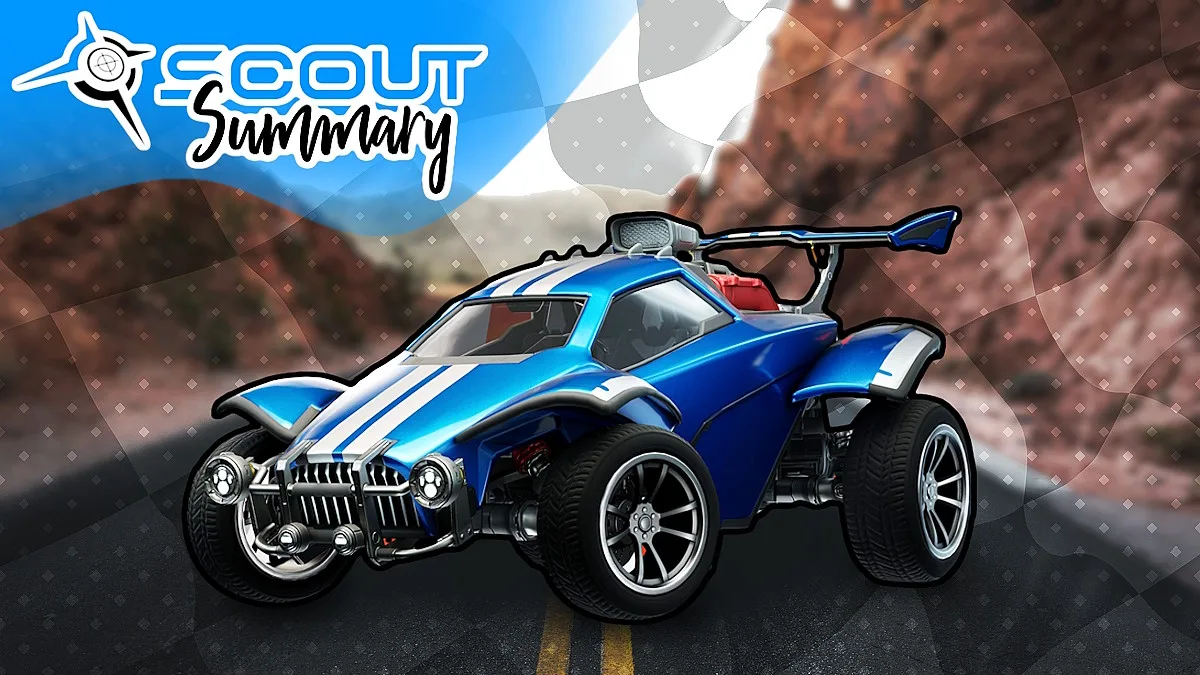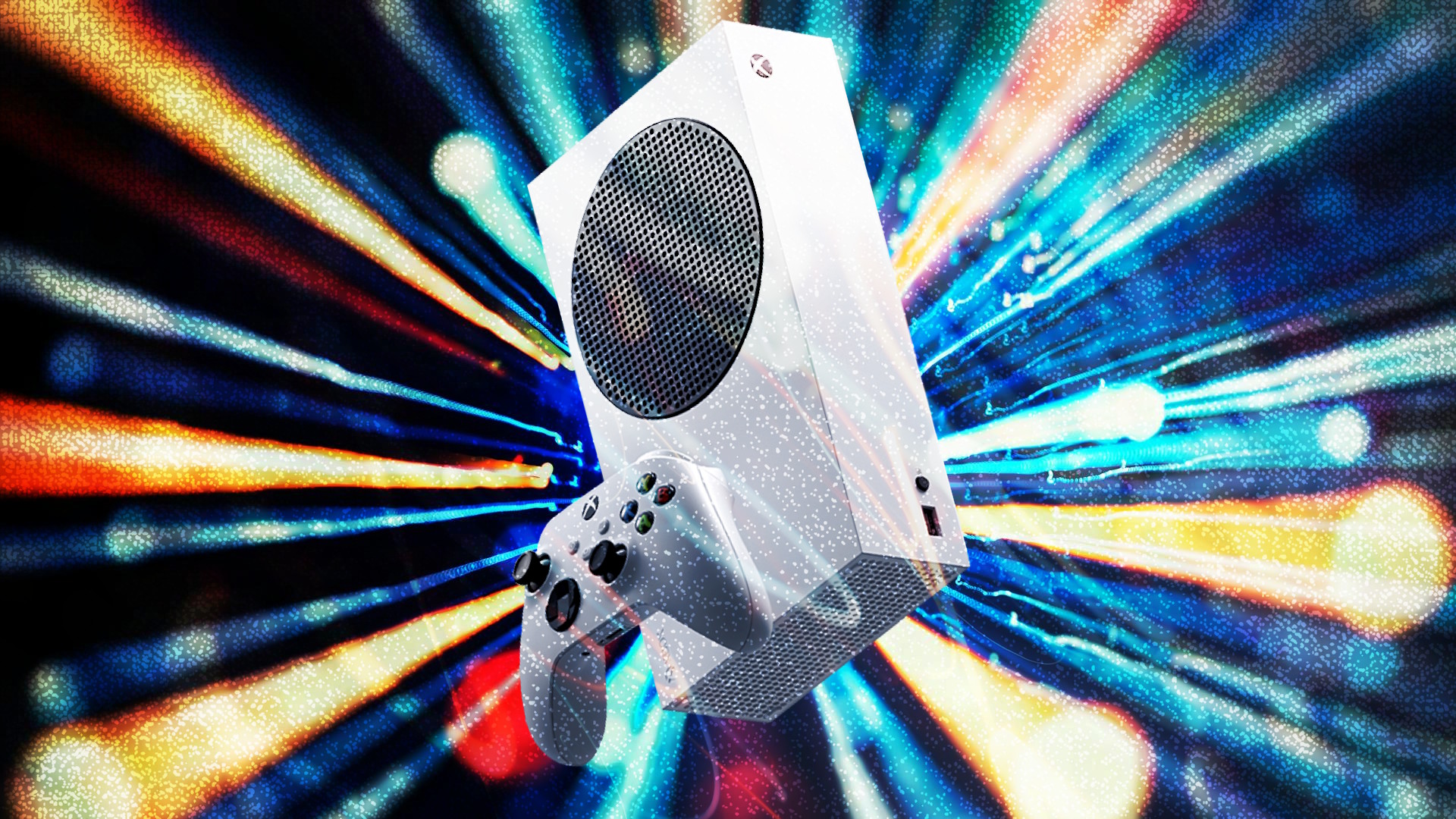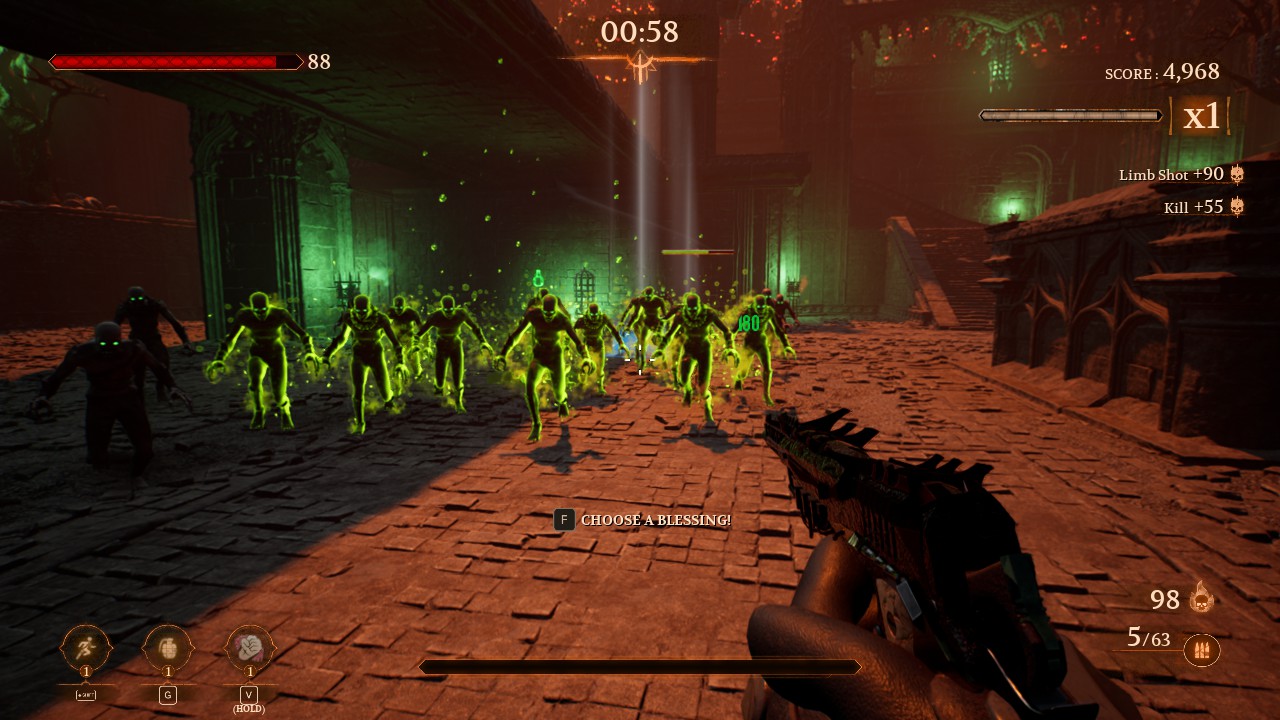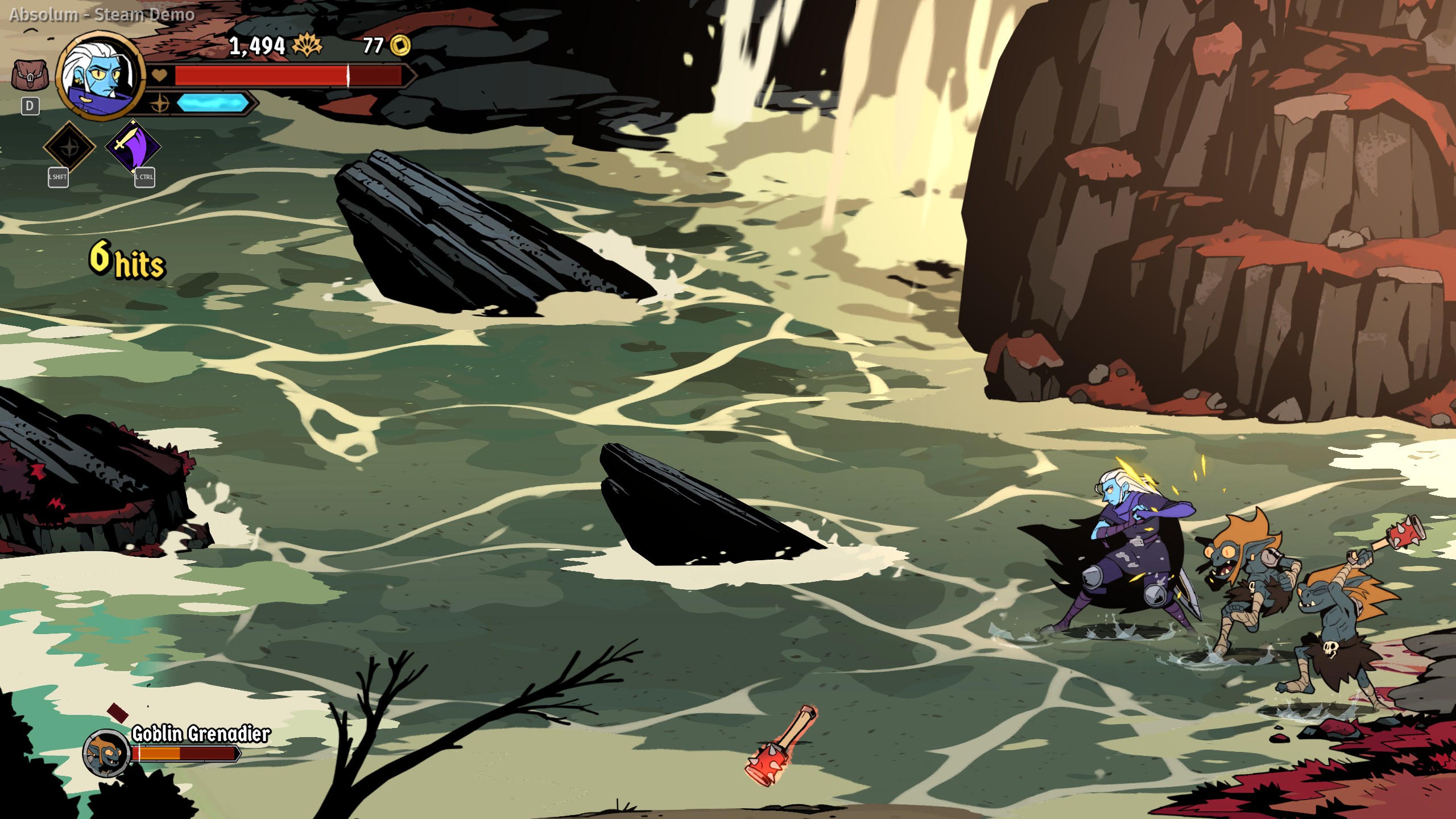Like most of the gaming world, I’m well aware of Fortnite. Yet, it’s not a game that I touch at all—or at least, this was the case until the recent release of Psyonix and Epic’s new mode in the game: Rocket Racing.
Blasting onto the scene pretty much out of nowhere, this high-octane (pun intended) arcade racer is frenetic, fluid, fast-paced fun. I’ve been enjoying it more than I would’ve thought. Yet, one question continued to stand out to me: Why is this in Fortnite?
Rocket power
Being derived straight from Rocket League, the frantic pace of of Rocket Racing is by no means a surprise.
The rocket-powered aerobatic cars the series is built around have long been sought after as racing machines rather than just ‘soccar’ vehicles, and that’s exactly what Rocket Racing sets out to accomplish.
Just like in Rocket League proper, the vehicles here have an array of rocket thrusters to the side, rear, and undercarriage of the chassis, allowing quick, snappy movement both on the ground and in the air.
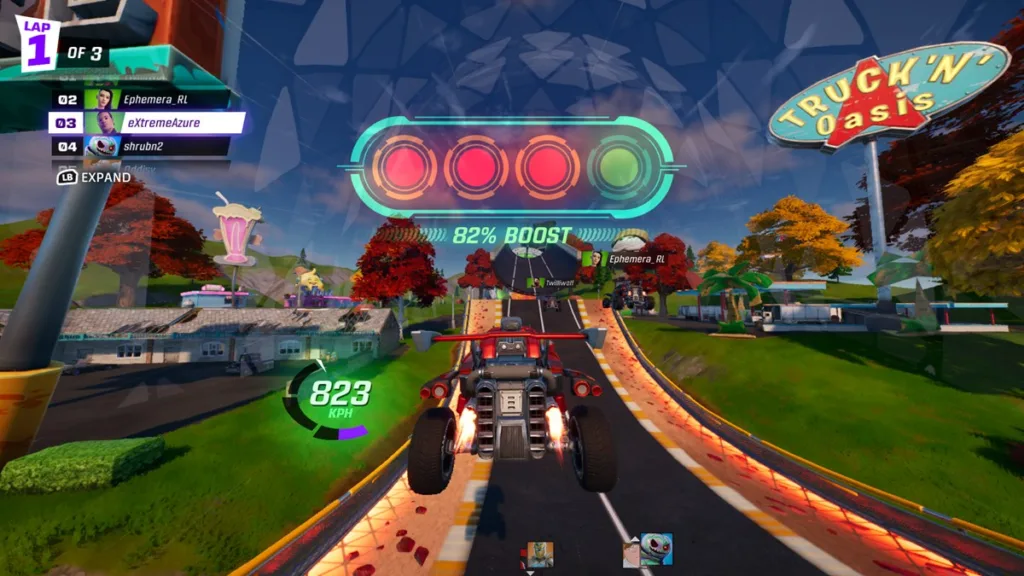
Right from the beginning of a race, you can take advantage of the boost mechanic by hitting the gas as soon as the start light turns green; the accuracy of your timing will be reflected in what percentage of starting boost is awarded.
Getting a high percentage will allow you to lead or at least get a good ways ahead of the pack right from the beginning, but it’s a challenge to maintain that lead throughout the three laps ahead.
Boosting in Rocket Racing isn’t just for the streets, as each vehicle here can take flight with a simple burn of the boosters, allowing you to leap off of the track in order to take alternate routes, or quickly hop onto a shortcut. Air Dodges can also be performed, which quickly shoots the car to the left, right, up or down depending on the direction of the control stick.
The tracks are built around these mechanics, and the more complex of the selection feature roads that go sideways and even upside down, allowing you to quickly boost between the terrain all in an effort to avoid speed-reducing and sometimes destructive red hazards, and also catch a green boost pad for an extra burst of speed to try and outpace the competition.
That said, catching air comes with the caveat of a slight reduction in speed, so it’s better to hit the ground as quickly as possible.
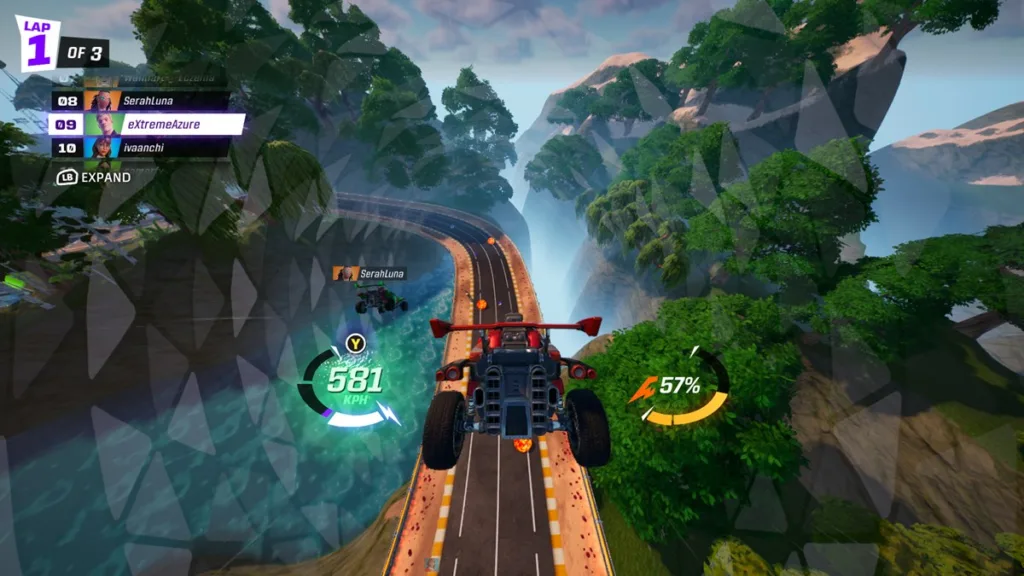
Each car’s rocket boosters can also be used on the ground to perform a Rocket Drift maneuver, which sends the rear of the vehicle into a deep powerslide around corners.
Just like in typical super arcadey/kart racers, your car here in Rocket Racing will continue to move forward at a fast pace as you drift, albeit with a slight reduction of speed versus when it’s rolling straightforward.
The reward and technique comes with sliding just enough to take a corner (which are often wide and very forgiving) all while losing as little speed as possible and filling the Turbo Charge gauge.

At the end of the drift, your car will get a small boost of speed for a few seconds. If at least one of the three segments of the Turbo Charge gauge are filled, you can then activate a full Turbo boost, which can be added onto a moment later with a double boost by hitting the button when prompted.
This quick ballet of drifting, dodging and boosting is very similar to how the mechanics in proper Rocket League matches work, albeit now in a fully racing-oriented format.
Thus, just like in Rocket League, and as pretty much is the case with any decently-balanced racer, these mechanics are fairly easy to learn, but take practice to master and exploit. So far, doing so is the only key to victory here.
Trackside drop(shots)
As mentioned earlier, the track design encourages the use of these different techniques. There are no items/power-ups to cause constant chaos on the track and thus randomly impede opponents.
Therefore, it’s up to the skill of each driver to use their boosts efficiently, take corners well, and seek out shortcuts both on and around the track in order to get ahead.
Drafting mechanics are also at play here, as getting caught in the slipstream of a leading vehicle will allow you to gain some energy for the Turbo Charge gauge, while also pulling you closer ahead ever so gradually.
While you may be able to plow into opponents while boosting in Rocket League, doing the same here in Rocket Racing typically offers no benefit.
I say “typically” because I have been spun out on at least one occasion by another player, although I don’t quite think it was deliberate. Still, this isn’t Burnout, so aggressive racing isn’t the aim of the game.
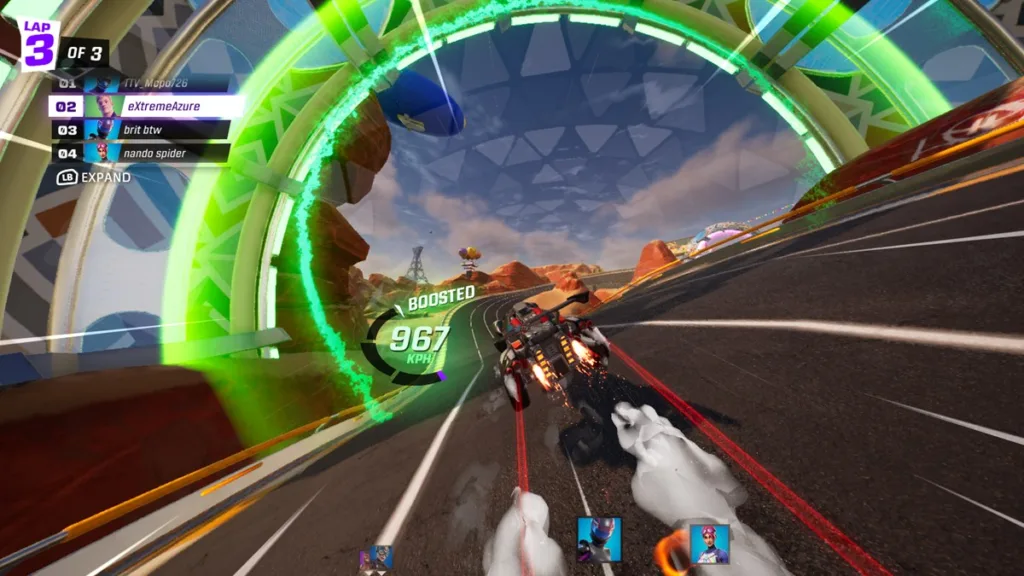
Either way, the stunt-oriented track design with roads both on and off the ground is pretty cool, and keeps the action moving frantically on a moment-to-moment basis.
This is in the spirit of a true arcade racer, helping Rocket Racing to completely standout from the “simcade” style of titles like The Crew Motorfest.
Such games, while taking some interesting liberties, are still grounded in reality. Meanwhile, Rocket Racing knows it’s a game, and acts like it.
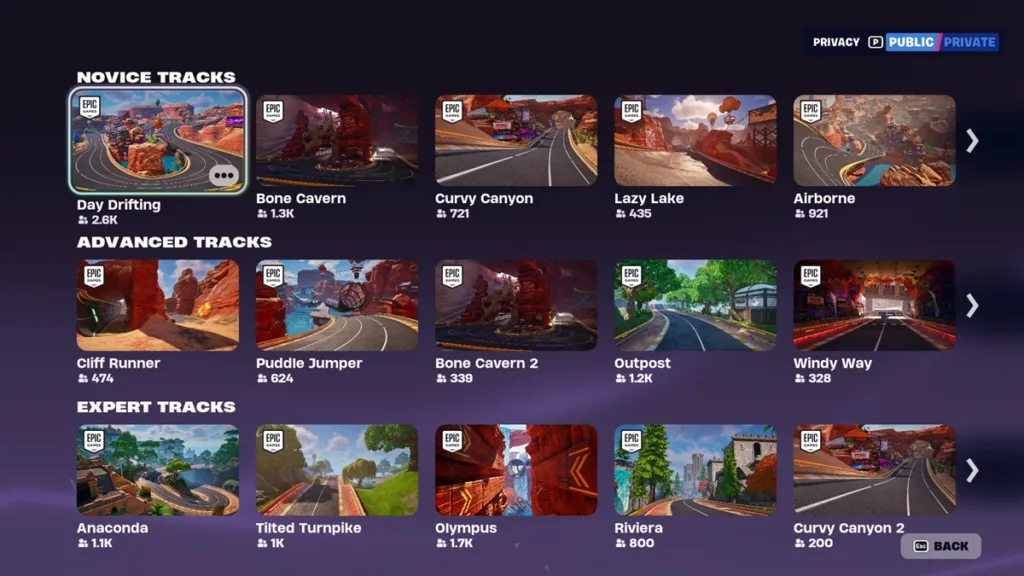
There are 26 tracks in all, divided into three categories: Novice, Advanced and Expert.
That said, six of the Expert tracks are alternate versions of tracks in the other categories; this isn’t necessarily a bad thing, but it does add to the already somewhat strong feeling of repetition that exists among the entire current track roster.
As it stands, most of the track environments have a canyon/desert theme to them, despite apparently being in different locations. This makes the vast majority of them look practically the same. Moving from race to race, I often didn’t realize I was playing on a different track until a few moments in when I noticed the course design was different.
Further adding to the sense of repetition, all of the tracks take place in broad daylight, with sunny weather at all times.
Sure, these factors are merely cosmetic, but it would certainly add to the sense of visual depth and atmosphere to have a more unique and varied selection of environments. On that note, despite each of the current tracks being designed by Psyonix (Rocket League’s studio), none of the environments from Rocket League proper have yet to be featured here.
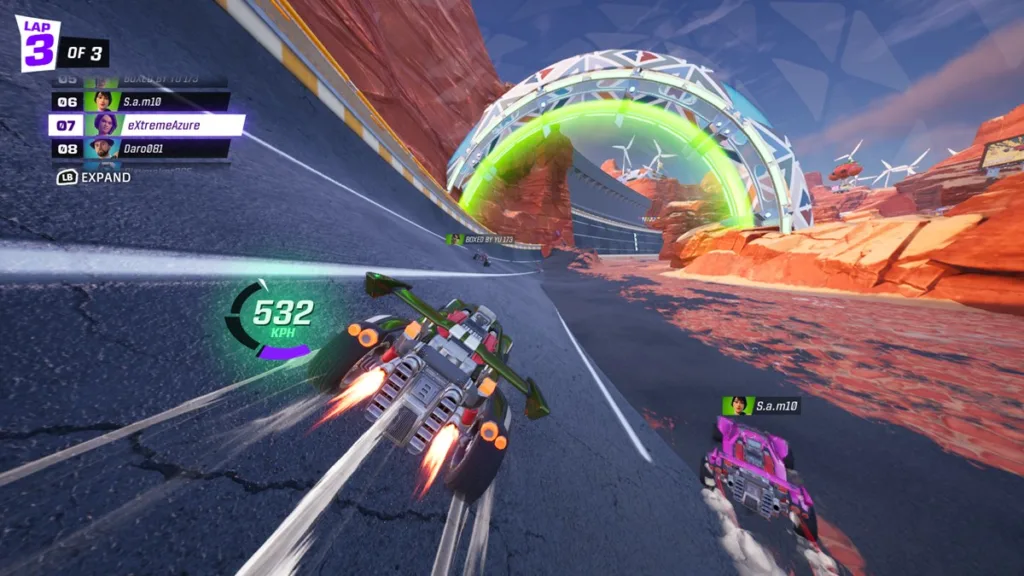
Rocket League has an array of beautiful and interesting environments for its arenas, such as the rolling fields of Farmstead, the tropical vibes of Salty Shores, the metro utopia of Neo Tokyo, and the deep depths of AquaDome.
Adapting such locales into race courses here in Rocket Racing seems like a no-brainer, so I find it odd that the devs have stuck to the theme of “Canyon Place A, B, C, D…” for the most part. So far, the only other environment is non-descript swaths of mountainous forests—still with continued hints of canyons, somehow.
Rocket Racing has already been promised to receive regular updates, so here’s hoping these plans include more varied environments in the not so distant future.
Speaking of its ongoing growth, this is perhaps a good time to address in the real elephant in the room and answer the question mentioned at the onset of this piece: again, why is this all in Fortnite anyway?
Carburetors and cash
Money. The answer is money—and that should come as no surprise.
For all that Rocket Racing does right, and it certainly does these things well, there’s still the nagging issue (or at least, oddity) that this is all nestled in the confines of Fortnite.
I mentioned in the beginning how Fortnite is a game I’ve largely ignored despite its practical omnipresent standing in the industry at this point.
Thus, up until now, I had no idea that it’s essentially been reinventing itself to become its own game platform for both amateur and professional developers in recent years. This is reminiscent to some other major standout F2P titles like Roblox.

Rocket Racing is just one of the growing number of ‘games-within-a-game’ that are in Fortnite. And, in the case of Rocket Racing specifically, this is a matter of merging one Epic IP with another.
While Fortnite itself was always Epic’s baby, Rocket League only joined the family back in 2019 when Psyonix was bought by Epic Games for an undisclosed amount. That said, no matter how much cash changed hands, Epic hasn’t been shy about showing its hand at trying to get its money’s worth.
Rocket League went free-to-play just over a year after the acquisition, and his since become a (rather expensive) microtransaction-laden hub of alluring cosmetics and virtual “only available for a limited time so buy now!” collectibles—just like every other game in this category.
Thus, Rocket Racing serves as an expansion to this business strategy, albeit with some very obvious cross-pollination at play.
Free-to-play frenzy
While Rocket Racing clearly exists outside the direct realm of Rocket League, Epic does allow players to have cross-ownership of specific items and vehicles between each game.
That said, it should come as no surprise that this pretty much involves only premium items that first need to be purchased with real-world money.
Fortnite has already built a massive economy of its own based on this business model, and thus Rocket Racing‘s new presence calls for yet another category in Fortnite Item Shop filled with shiny stuff to entice players to buy.
For instance, the posterchild for Rocket League, the Octane, is the only vehicle you get to drive in Rocket Racing for free.
It’s the default car in Rocket League as well, and while there’s a sizeable (and growing) amount of premium vehicles, there are still a few stock selections like the Breakout and Merc which are available to all players.
Thus, once again, it’s odd, if not a little nefarious, that these haven’t been included as starter cars here in Rocket Racing.
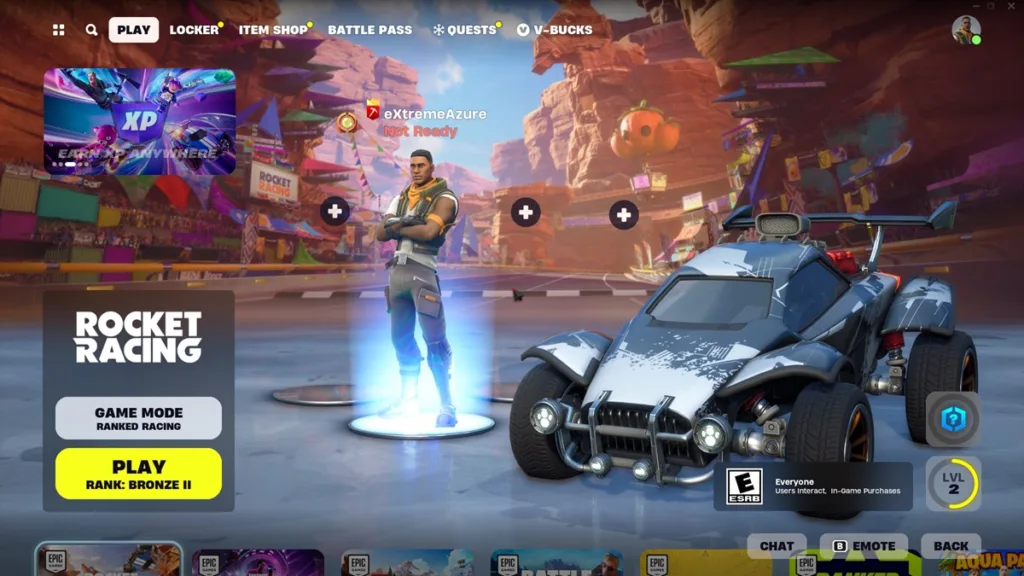
It’s already a bit of a miff that items for customization in Rocket Racing are also all mostly locked behind a paywall, even for the starter Octane.
Thus, if you really want to keep the “free” in free-to-play for this game, you just have to settle with sticking to swapping between a few decals and color swatches for the Octane.
Unlike a typical racer, there’s no actual benefit to driving an entirely different vehicle here in Rocket Racing; it pretty much just serves as a model swap here. Still, for the sake of keeping things feeling fresh, it would be nice to drive a different set of wheels without having to shell out the eyewatering equivalent of $29 USD (the cost of 4,000 V-Bucks).
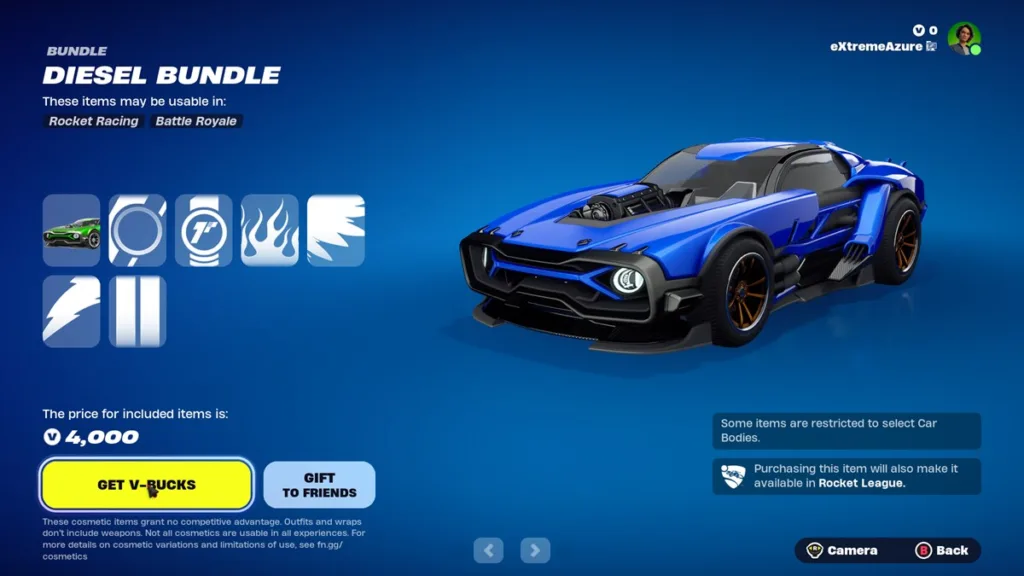
One way that Epic softens this very blunt impact is that sanctioned items/vehicles bought in either Fortnite or Rocket League will be immediately available in the other game. But, as it stands, that selection at launch is confusingly small and is still in the process of ongoing expansion.
Considering that Rocket Racing must’ve been in development for some time already, it’s annoying that players still have to play the waiting game to see exactly how the roster of cross-ownership will grow.
Family matters
Nevertheless, Rocket Racing being a separate mode within Fortnite with a shared inventory of premium items with Rocket League ties back into the point earlier about cross-pollination.
I can pretty much use my own case as an example of this.
As a longtime Rocket League fan, I wanted to access Rocket Racing as soon as it was available. So, I had to update the Epic Games Launcher that I hardly ever use, download and install Fortnite, and now it sits on my PC as the vessel that must be used to play Rocket Racing.
In a similar fashion, a Fortnite fan may be intrigued by the car designs of the Rocket Racing vehicles, or may just simply be curious as to what the main game is all about, and will then choose to jump into Rocket League for the first time.
Mixed with the shared inventory of both games, now Epic has two strings attatched to both kinds of the customers in these examples.
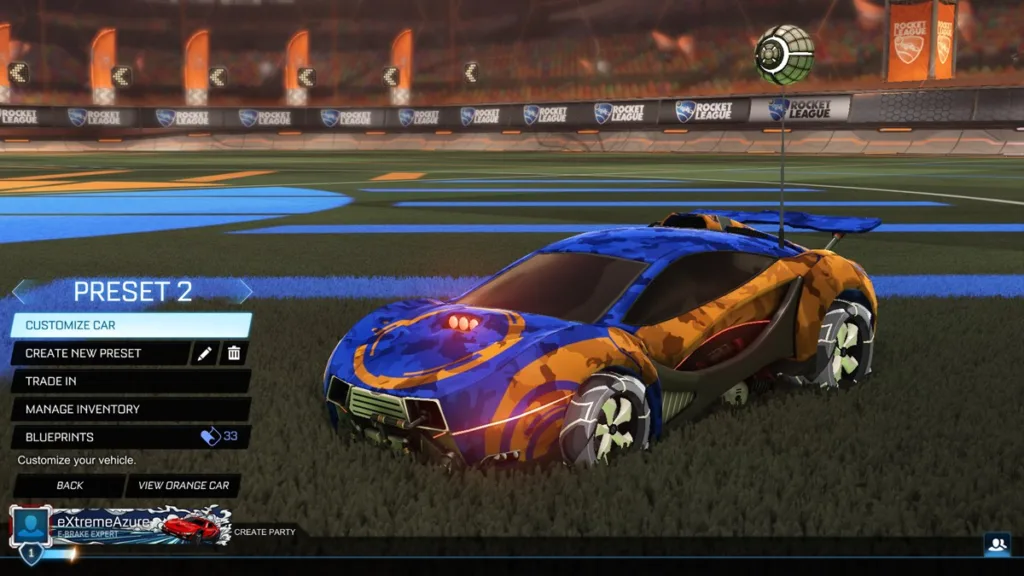
All of this can’t really be considered “bad” or “evil”, but it is rather perplexing without considering the business aspects behind it.
On one hand, Fortnite now has a very fun, competitive free-to-play racing mode that doesn’t require you to mess with anything else in order to access it; you can pretty much ignore what Fortnite is on its own.
But, having to keep an additional game installed on a drive just to access one of its modes serves as yet another hurdle to jump through.
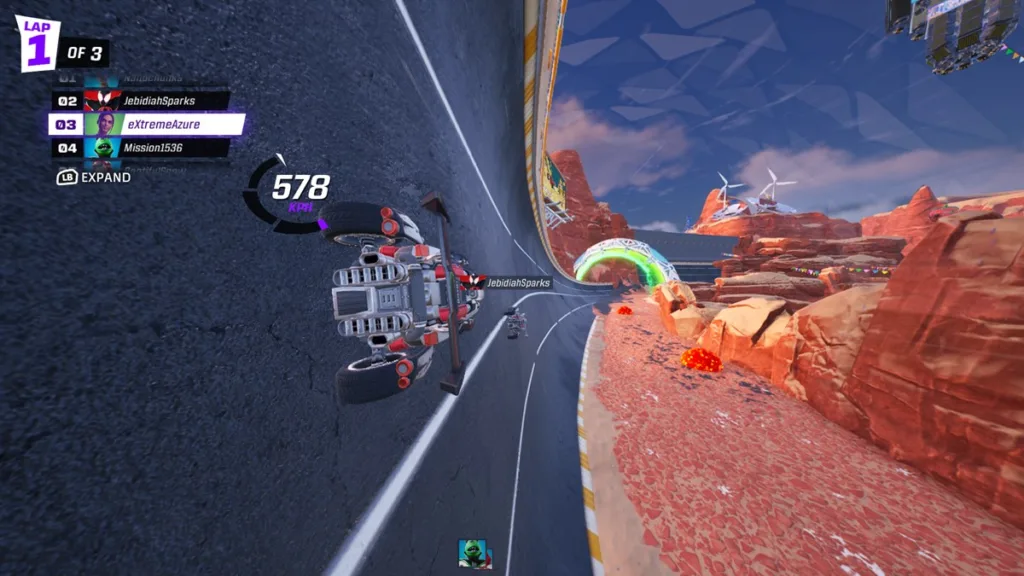
As a Rocket League fan, of course I’d love to just play this alongside that main content within the same game; it also has extra modes of its own, although admittedly they’re all variations of the core soccar formula.
Even so, one more interesting factor about this whole situation is that both Fortnite and Rocket League are powered by Unreal Engine; which was always the case, even before Epic bought Psyonix.
I’m not a game developer, so I’m not going to pretend like I know how “simple” such a feat merely appears to be, but I do have to at least wonder if it would’ve taken about just as much effort to build Rocket Racing within Rocket League, given it using the same toolset.
Some fans have already created their own rather impressive race courses within Rocket League using the game’s existing tools, at least giving us a small example of how this could’ve all worked when crafted by the hands of Psyonix itself.
Of course, there’s always the idea that this all could’ve been its own standalone game with the same cross-game item ownership system that’s currently in place between Fortnite and Rocket League. In fact, if Rocket Racing were its own game, perhaps it would feel like an even bigger experience.
Problems in the pavement
As fun as Rocket Racing is, not to mention how pretty it looks thanks to Fortnite’s timeless artstyle and array of striking visual effects, this really does feel like an extra game mode rather than its own fleshed out experience.
Here in Rocket Racing, you can easily continue on with another race after completing one. Even so, this doesn’t feel nearly as tidy of an experience as playing within a cup of a dedicated championship mode; a tentpole feature of any traditional arcade racer.
There’s not even any additional race types like Time Attack or Elimination; here it’s just simply racing three laps, earn some XP, complete a few quests from performing actions in the race, then and move onto the next one.
Another bummer is that currency cannot be earned strictly from playing to buy more cars or items, nor is there any ranking up to unlock better equipment.
Really, Rocket Racing doesn’t really offer much in the way of an authentic feeling of significant progression—at least to me.
There is a Ranked Mode that pits you against fellow players of similar skill levels depending on the rank, but that’s about it in terms of true progression.
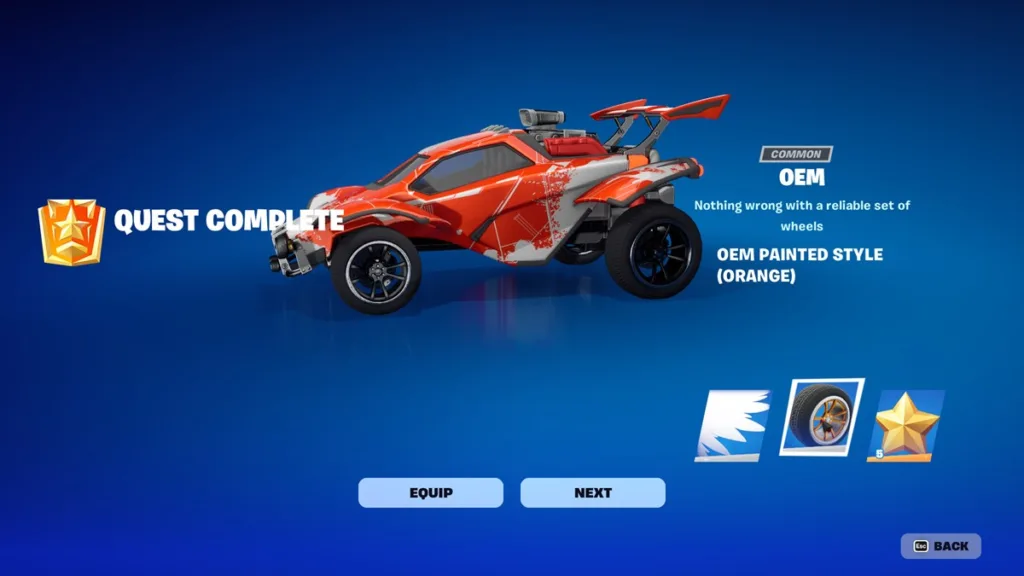
Ultimately, Rocket Racing doesn’t feel as fleshed out as a real racing game, and that’s because it still isn’t a real racing game. It’s essentially almost like add-on for an entirely separate game. Still impressive that Rocket Racing feels a bit like its own experience, but it’s the limited scope as a result of this that serves as a constant reminder of the reality of the situation.
Thus, again, I can’t help but feel attaching it to Fortnite makes this out more as an elaborate party trick rather than a fully-fledged new entry in the arcade racing genre—and it would so well as such, too.
Yet, there’s still that promise of ongoing support.
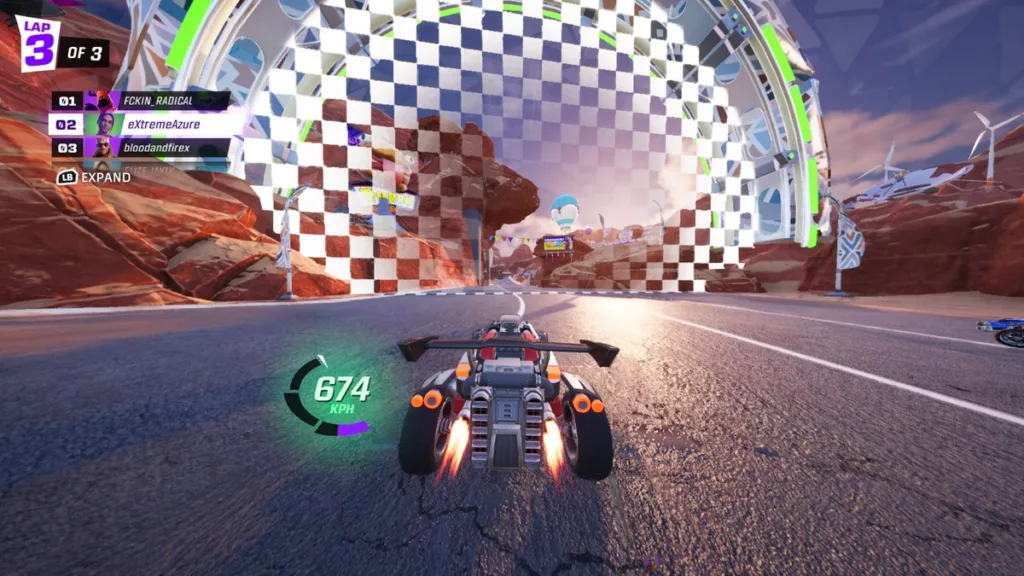
If Rocket Racing is properly treated like its own game in that regard and gets regular, dedicated updates that expand its scope, then this interesting formula of playing a game-within-a-game may prove to be better over time.
But, as of right now in Season 0, this is just a fun, yet somewhat repetitive distraction that can get very expensive if you’re not careful.
Check out more gearhead content:
Karting Superstars – PC Early Access impressions | Riders Republic Skate add-on – Is it worth it? | Looking back on the legacy of The Crew 2
Scout Summary is a series dedicated to providing a review-like report of games and their DLC when, despite not having been fully completed, have already shown off a significant portion of their mechanics. Thus, these reports highlight the visited aspects of the content and summarise the writer’s overall feelings of the project. Or, you can just call these mini reviews/impressions…but that’s less fun!

